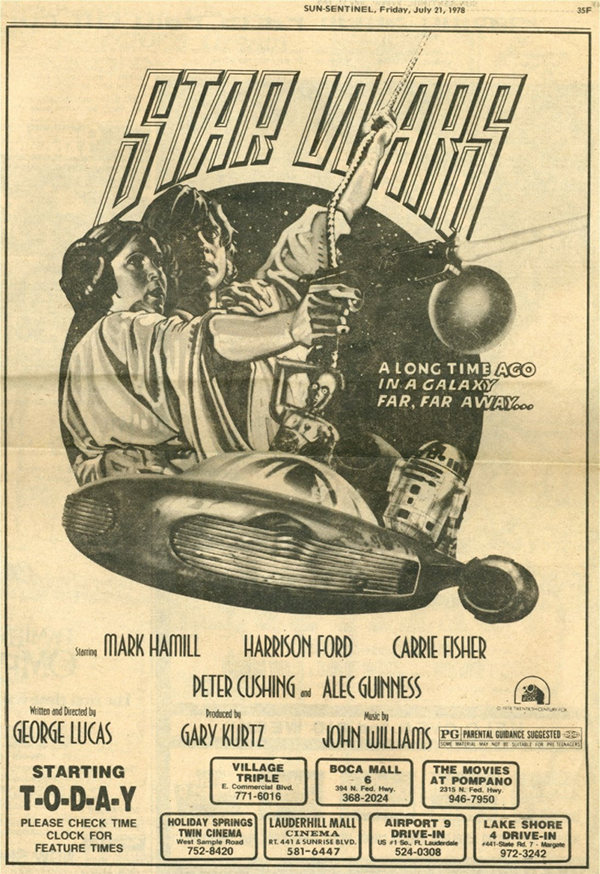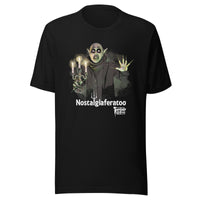You can learn a lot about the year 1977 from its amusing magazine ads
All we needed were CB radios, bananas and funk to keep us happy.

It's amazing how quickly four decades can fly by. In a way, 1977 feels like yesterday. After all, our culture is still obsessed with 1977 movies, 1977 TV shows, 1977 pop music.
On the other hand, 1977 seems like ages ago, especially when you consider that the closest thing to a portable smartphone was a combination CB radio/8-track player for your car.
Like this:
 Image: Popular Science / Google Books
Image: Popular Science / Google BooksThere's plenty more where that came from. We went digging through some old magazines from '77. Here are 20 things you can learn about the year via advertising.
Florence Henderson was still America's mom.
The Brady Bunch may have been off the air for three years, but The Brady Bunch Hour was just kicking off. And Carol herself was concerned about everyone's Vitamin C intake.
Regardless of the lunchbox, every kid wanted to be the Fonz. Image: VintageAdz / Twitter
Image: VintageAdz / Twitter
Aaaaay! We want that Happy Days pail for work.
The shampoo market was flourishing. Image: twichery / Flickr
Image: twichery / Flickr
Figure skating icons were even promoting shampoo specifically for short (and sassy) hair. Heck, there was even shampoo with beer.
This was considered "miraculous" pocket technology…
 Image: Boys Life / Google Books
Image: Boys Life / Google BooksSlightly less annoying than a ringtone.
…because this was the only way to carry a telephone.
 Image: Ebony / Google Books
Image: Ebony / Google BooksIncoming call "beeps" were a new feature touted in this Bell ad.
But mobile communication was still all the rage.
 Image: Popular Science / Google Books
Image: Popular Science / Google BooksIf you understand this CB lingo, you are a true '70s child.
Cars could barely fit on the page.
 Image: Ebony / Google Books
Image: Ebony / Google BooksYou'd have to buy a two-page spread for a Fleetwood Seventy-Five.
It's no wonder we spent so much time at the car wash.
 Image: Billboard / Google Books
Image: Billboard / Google BooksThey even made a movie — and hit song — about it.
Speaking of movies, perhaps you've heard of this modest little opening. Image: anthonybehindthescenes
Image: anthonybehindthescenes
Can you imagine a new Star Wars movie opening on just seven screens in a major city T-O-D-A-Y?
Yet the biggest movie star was perhaps a dog.
 Image: Boys Life / Google Books
Image: Boys Life / Google BooksThey were building Benji hype months in advance.
TV movies were awesome, too. Image: trash flavoured trash / Tumblr
Image: trash flavoured trash / Tumblr
There were some genuine horrors to be found on network television.
Clothing was a lot more fun. And polyester.
 Image: Ebony / Google Books
Image: Ebony / Google BooksSee-through heels for men! Big "oil derrick patterns" on jeans!
Basketball sneakers were old school.
 Image: Boys Life / Google Books
Image: Boys Life / Google BooksWarning, this offer is no longer valid.
Men wanted to be macho and musky. Image: Found in Mom's Basement
Image: Found in Mom's Basement
"Macho soap. At fine stores." Probably not too fine, though.
Hash browns were finally flat. Image: Jason Liebig of collectingcandy.com / Flickr
Image: Jason Liebig of collectingcandy.com / Flickr
McDonald's had to reassure customers about their "funny shape." Even Macho could not cover up the delicious smell of fried potatoes.
Yet, TV screens were hardly flat.
 Image: Popular Science / Google Books
Image: Popular Science / Google BooksFlatscreen? Ha! You needed a repairman and a carpenter to fix a wooden set like this.
Apple was just getting started. Image: marketingdirecto
Image: marketingdirecto
Hey, we weren't primative. We had a new little machine called an Apple, which had recently launched its iconic logo.
This was the only way to take a selfie.
 Image: Ebony / Google Books
Image: Ebony / Google BooksInstagram, circa 1977.
Kids were bananas for bananas.
 Image: Boys Life / Google Books
Image: Boys Life / Google BooksToday's kids all want a fancy Apple iPhone. Back in the day, we'd be thrilled with a Banana tent.
"Rapping" had a much different meaning then.
 Image: Popular Science / Google Books
Image: Popular Science / Google BooksAfter "Rapper's Delight" came out a couple years later, Coke probably had to change its ad copy.







1 Comments

'meaning "to speak to, recognize, or acknowledge acquaintance with someone", dated 1932, and a later meaning of "to converse, esp. in an open and frank manner". It is these meanings from which the musical form of rapping derives, and this definition may be from a shortening of repartee.[19] A rapper refers to a performer who "raps". By the late 1960s, when Hubert G. Brown changed his name to H. Rap Brown, rap was a slang term referring to an oration or speech, such as was common among the "hip" crowd in the protest movements, but it did not come to be associated with a musical style for another decade.
Rap was used to describe talking on records as early as 1971, on Isaac Hayes' album Black Moses with track names such as "Ike's Rap", "Ike's Rap II", "Ike's Rap III", and so on. Hayes' "husky-voiced sexy spoken 'raps' became key components in his signature sound". Del the Funky Homosapien similarly states that rap was used to refer to talking in a stylistic manner in the early 1970s: "I was born in '72 ... back then what rapping meant, basically, was you trying to convey something—you're trying to convince somebody. That's what rapping is, it's in the way you talk."
During the mid-20th century, the musical culture of the Caribbean was constantly influenced by the concurrent changes in American music. As early as 1956, deejays were toasting (an African tradition of "rapped out" tales of heroism) over dubbed Jamaican beats. It was called "rap", expanding the word's earlier meaning in the African-American community—"to discuss or debate informally."
The early rapping of hip-hop developed out of DJ and Master of Ceremonies' announcements made over the microphone at parties, and later into more complex raps. Grandmaster Caz states: "The microphone was just used for making announcements, like when the next party was gonna be, or people's moms would come to the party looking for them, and you have to announce it on the mic. Different DJs started embellishing what they were saying. I would make an announcement this way, and somebody would hear that and they add a little bit to it. I'd hear it again and take it a little step further 'til it turned from lines to sentences to paragraphs to verses to rhymes."'





























